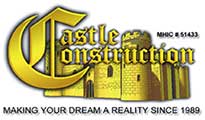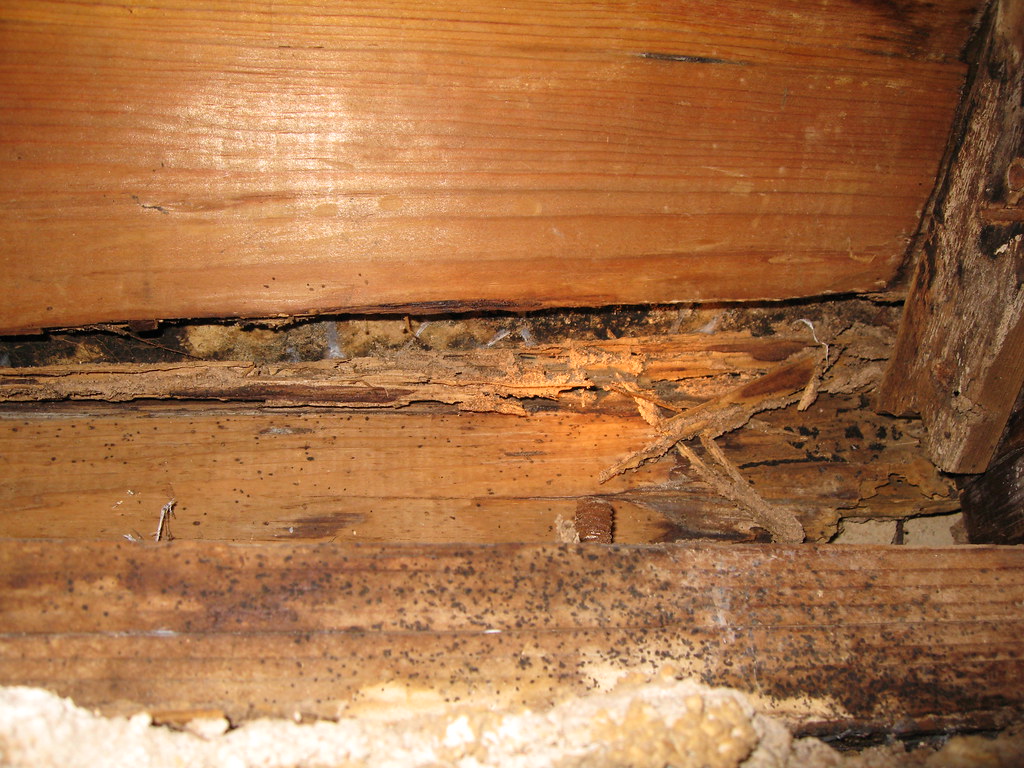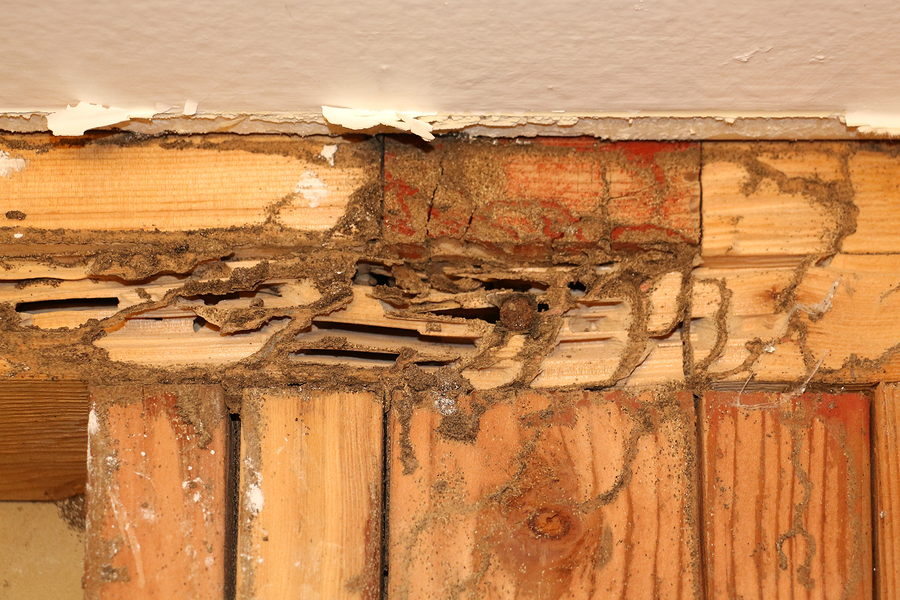Old termite damage features dried-out tunnels and no live termites, while new damage has soft, moist wood and live insects. Differentiating between old and new termite damage is essential when assessing a house.
What Is Termite Damage
Termite damage often reveals itself through hollowed-out wood, buckling floors, and maze-like patterns in furniture. These pesky insects can compromise the structural integrity of a home by feasting on the cellulose contained within the wood, often unnoticed until significant harm has been done.
Signs such as discarded wings near windows or doors can indicate recent infestations, while grooves in wood might suggest an older problem. Careful inspection of mud tubes, which termites create for protection as they travel, can also be telling. Evaluating the extent of damage and consulting with a professional can help in determining the timeliness of a termite invasion, ensuring that appropriate measures are taken to address the issue effectively.
What Does Old Termite Damage Look Like In A Home?
Distinguishing between old and new termite damage is crucial for assessing the current risk to a property. Old damage typically features wood that appears weathered or has taken on a darker hue, indicating that termites have long since departed. Tunnels or galleries within the wood, once occupied by these pests, may be devoid of active termites and feel dry and brittle to the touch.
Another sign of aged damage includes the presence of termite feces, known as frass, which resembles fine sawdust having piled up over time, suggesting past infestation activity. Homeowners should be vigilant, inspecting structural timbers for hollow sections, a sign that termites have compromised the wood’s integrity.
What Does New Termite Damage Look Like In A Home?
Inspecting the integrity of your house for termite damage can be daunting, particularly when trying to distinguish between ancient battles and fresh assaults from these relentless pests. New termite damage often manifests as hollowed-out wood with a paper-thin surface or visible mazes just beneath the exterior.
Tiny, delicate mud tubes traversing foundation walls are alarmingly fresh signs of termite presence, as these structures serve as lifelines for termites, shuttling them from soil to wood. Fresh wood shavings and Fras termite droppings near baseboards and door frames are also telltale signs of recent activity.
How A Homeowner Can Tell The Difference Between Old And New Termite Damage?
Determining the age of termite damage can be key in assessing the current threat to your home. Firstly, examine the wood damage; older termite damage often results in wood that is hollowed out and has a more weathered appearance, indicating that the damage has been present for some time.
Fresh termite damage, meanwhile, is typically lighter in color and the timber may still contain moisture, suggesting recent activity. Secondly, frass or termite droppings is a tell-tale sign of new damage. These tiny, wood-colored pellets near damaged wood usually point to an active infestation.
On the other hand, a lack of Fras could imply that the termites have moved on. Spotting live termites is a clear sign of a current problem, while abandoned termite tunnels, which termites leave behind once they’ve consumed the available wood, often signify past infestations. Careful observation of these indicators can help you ascertain the period and severity of termite damage.
What Are The Specific Signs Of Old And New Termite Damage?
Old and New Termite Damage is crucial for homeowners to assess the urgency and extent of an infestation. Tell-tale signs of long-standing damage include wood that seems hollow when tapped, visible mazes within walls or furniture, and a presence of dried mud tubes indicative of abandoned termite highways.
fresh damage might manifest as recently discarded wings near windows or doors, softening wood, and active mud tubes. These latter indicators suggest a current termite presence, necessitating immediate action. It’s essential to conduct a thorough investigation or consult a professional, as undetected termite activity can compromise the structural integrity of your home over time.
Why A Homeowner Should Be Worried About Old Termite Damage?
Old termite damage in a home can lurk silently, compromising structural integrity over time. Homeowners may not realize the extent of past infestations, but distinguishing old damage from new can prevent future issues. Identifying weathered, hollowed wood or maze-like patterns in the structure signals previous termite activity, which, if left unmanaged, might have already weakened the home’s wooden components.
Vigilance is key; regular inspections can catch new damage before it becomes extensive. It’s crucial to remain aware of subtle signs like discarded wings or frass, which often indicate an active infestation, calling for immediate intervention. Understanding the history of termite damage within a property ensures proactive measures, safeguarding home value and safety.
Why Select Castle Construction For Termite Damage Repair Service
Selecting the right team to address termite damage in your home is crucial, and Castle Construction stands out as a top choice. Their experts possess an eye for distinguishing between Old Termite Damage from New House ensuring accurate assessments. By entrusting your property to their proficient hands, worry dissipates as they implement tailored repair solutions.
They bring to the table a wealth of knowledge, state-of-the-art techniques, and a commitment to restoring the integrity and beauty of your home. Renowned for their reliability and exceptional customer service, they focus on mitigating future risks, leaving your house stronger and more secure. With Castle Construction, peace of mind comes from knowing that your termite woes are being resolved by the best in the business.
FAQs Of Old Termite Damage From New House
Can Old Termite Damage Be Fixed?
Yes, old termite damage can typically be repaired by replacing compromised wood and reinforcing the structure’s integrity. It is essential to ensure termites are eradicated before starting repairs.
How Does New Termite Damage Look?
New termite damage often appears as fresh, light-colored galleries or tunnels in wood, and may be accompanied by Fras termite droppings or live insects.
What Are Signs Of Active Termites?
Signs of active termites include mud tubes on walls, sawdust-like droppings, wings near entry points, and soft or hollow-sounding wood when tapped.
How To Distinguish Termite Damage Age?
Determining termite damage age involves looking for wood discoloration, the presence of decay, and the condition of tunnels; older damage has darker, more degraded wood and inactive galleries.
Is Old Termite Damage Dangerous?
Old termite damage can compromise structural integrity if not addressed, potentially making a building unsafe. It is recommended to inspect and assess the extent of damage promptly.
Conclusion
Termite Damage’s age in your home is crucial for effective intervention. Now you know the subtle signs that differentiate old from new damage. Regular inspections and prompt action can save your house from further harm. Remember, safeguarding your home against termites is an ongoing process.


